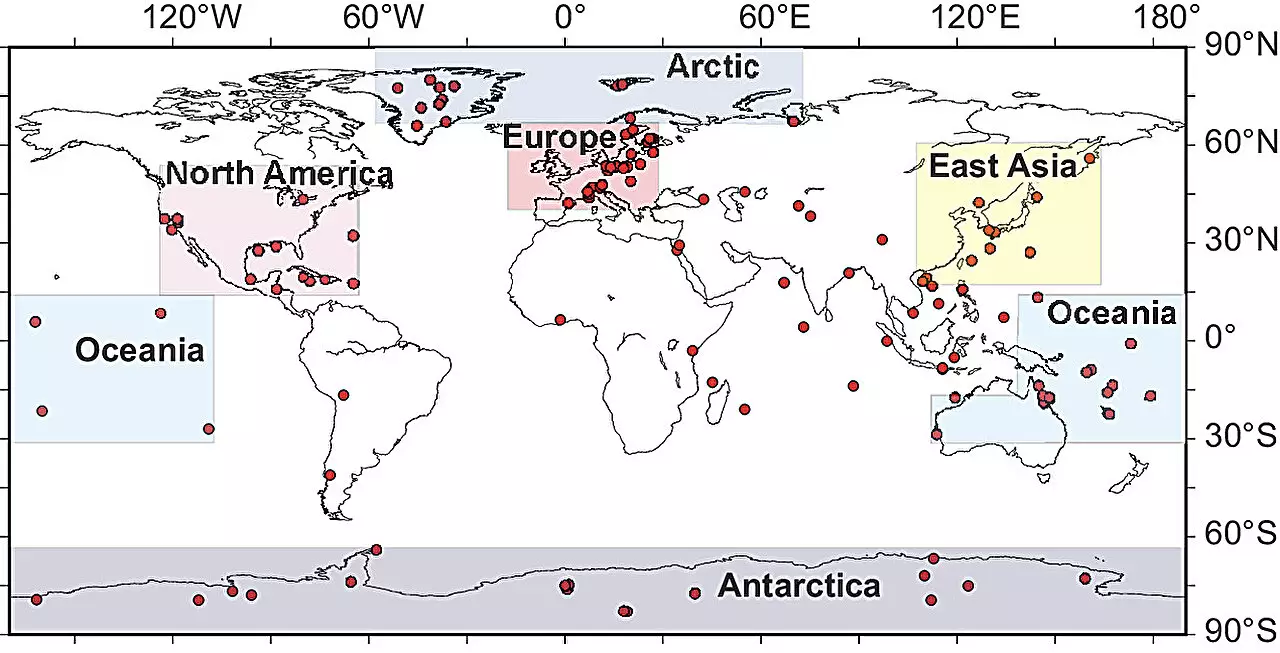In recent years, the concept of the Anthropocene has gained traction, stirring substantial dialogue among scientists about the epoch defined by human impact on Earth. Driven by a multidisciplinary team of researchers from prestigious institutions such as the University of Tokyo and The Australian National University, new assessments point to the 1950s as a pivotal decade marking the commencement of the Anthropocene epoch. This article seeks to dive deeper into the evidence supporting this assertion while evaluating its implications for understanding the Earth’s geological and environmental history.
The term “Anthropocene” was popularized in 2002 by Nobel Prize-winning chemist Paul Crutzen, who argued that human activities have led to significant alterations in Earth’s geological and biological systems. For years, the scientific community has engaged in a lively debate concerning the exact onset of this new epoch. While some researchers assert that clear evidence supports a definitive transition, others argue that the shift remains indeterminate.
The research team’s analysis contributes to this dialogue by proposing a clear timeline for the Anthropocene’s initiation, particularly focusing on three potential epochs—the late 19th century, early 20th century, and the mid-20th century. By examining critical indicators such as industrialization and environmental changes, the researchers aim to discern a distinct starting point for this new phase in Earth’s history.
The first candidate for the Anthropocene’s onset—the late 1800s—coincides with the Industrial Revolution, a transformative period when human activities began to unleash substantial environmental changes. The researchers highlighted this era’s marked increase in lead pollution and notable shifts in stable isotope ratios and nutrient balances. Such alterations indicate humanity’s burgeoning impact on natural systems.
The second candidate, the early 1900s, presented factors like significant changes in global pollen patterns and rising levels of black carbon. These elements not only illustrate humans’ growing modifications to the environment but also underline the distinctly new relationship between humanity and nature. It represents a period of industrial growth that provided the foundation for further environmental challenges.
Ultimately, the team’s investigative focus narrowed to the pivotal decade of the 1950s, a period that crystallized the myriad of changes initiated by humanity. This decade has been described as an era of profound transformation: from the dissemination of organic pollutants and increasing plastic pollution to the global ramifications of nuclear tests. The transformation during this period marked a watershed moment in Earth’s environmental trajectory.
The findings emphasize that the 1950s ushered in irreversible and measurable changes to the planet’s environmental landscape. From widespread plastic pollution—whose remnants remain nearly impervious to natural degradation—to the omnipresent effects of industrial waste, the evidence of human impact is both stark and compelling. Furthermore, this period also signals the beginning of significant climatic shifts as a result of greenhouse gas emissions, establishing enduring consequences that may stretch into millennia.
The researchers conclude that the 1950s should be recognized as the ‘official’ start of the Anthropocene. Their findings prompt a reevaluation of our understanding of geological time, challenging traditional timelines dictated by natural events alone. This perspective not only seeks to redefine our planet’s historical narrative but also serves as a call to action regarding the responsibilities of humanity in the Anthropocene.
By recognizing the 1950s as a definitive marker, scientists may better address contemporary environmental challenges that arise from human activity. Understanding our position within this epoch can guide policy decisions and inspire grassroots movements aimed at rectifying the persistent ecological crises tied directly to our current way of life.
As we navigate the complexities introduced by our actions over the past century, defining the Anthropocene and pinpointing its outset became increasingly crucial. The work of the Earth scientists illuminates glaring environmental changes that demand our attention. In a world still grappling with the consequences of these changes, understanding the Anthropocene is not merely an academic exercise but a vital component of forming our response to pressing global challenges. Through collaborative efforts and continued research, we can aspire to foster a more sustainable future that acknowledges and learns from the past.


Leave a Reply